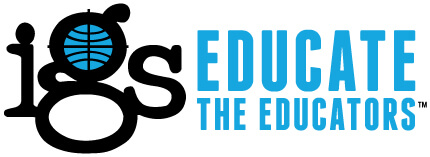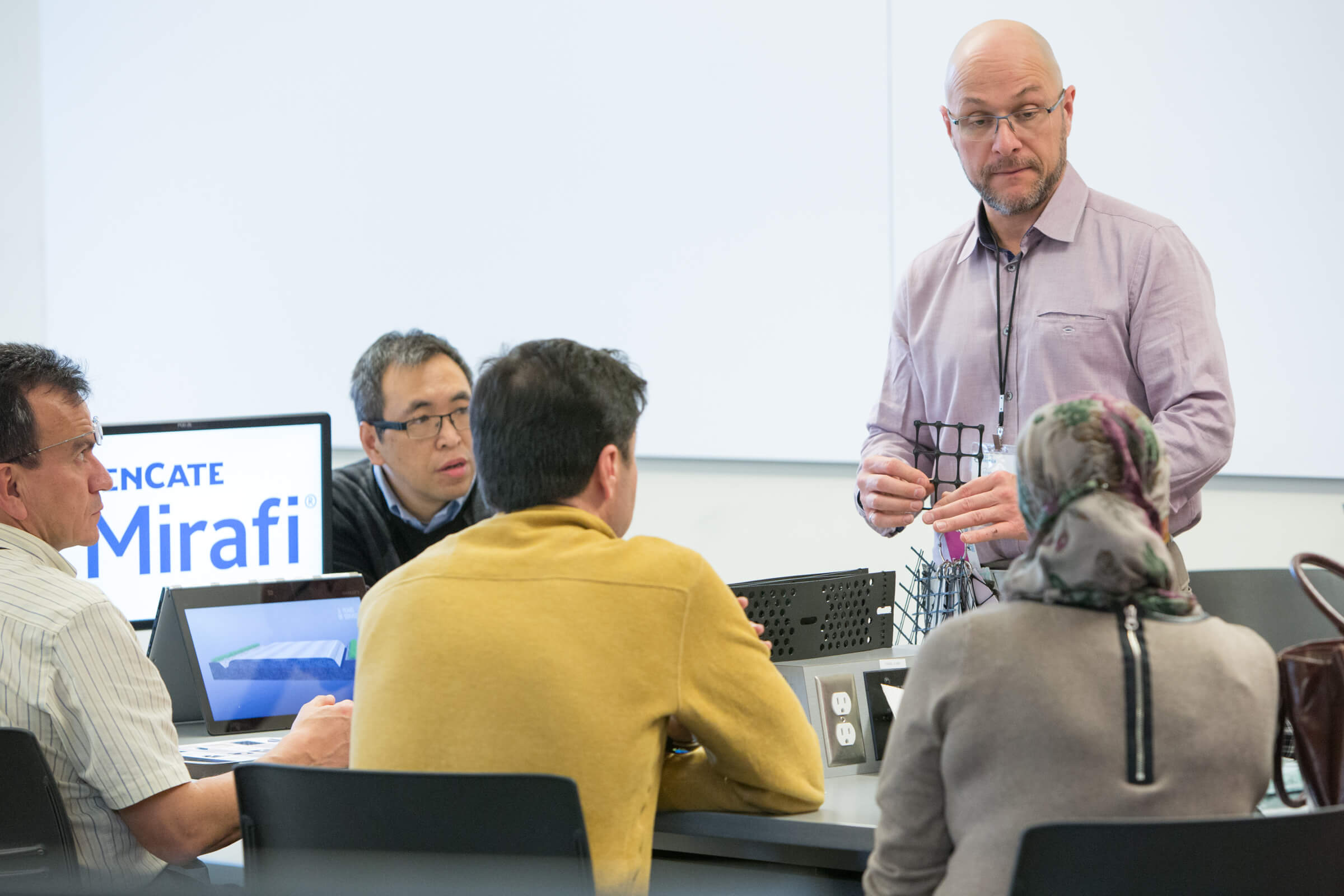

Each successful applicant will need only to organize transportation to and from the course. IGS and IGS-NA and their sponsors will provide food, lodging and course registration to all successful candidates.
The program will run the two full days of Monday December 9 and Tuesday December 10, 2019 at UC San Diego in La Jolla California. Applications should plan on arriving on Sunday December 8 and departing on Wednesday December 11.

*subject to change
| Monday, December 9 | Tuesday, December 10 |
| Opening: Welcome, introductions and philosophy | Topic 6: Introductory class on geosynthetics for environmental protection |
| Topic 1: Introductory class on types and functions of geosynthetics | Discussions |
| Discussion | Case History 3 |
| Workshop: Recognizing geosynthetic materials | Case History 4 |
| Topic 2: Fundamental properties | Topic 7: Calculating and minimizing leakage through composite geosynthetic liners |
| Discussion | Case History 5 |
| LUNCH | Case History 5 |
| Topic 3: Introductory class on geosynthetics in roadway systems | LUNCH |
| Discussion | Topic 8: Factors affecting the service life of geosynthetic liners |
| Topic 4: Geosynthetics for stabilization of road subgrades | Discussion |
| Topic 5: Geosynthetics for stabilization of road bases | Topic 9: Introductory class on geosynthetics for soil reinforcement |
| Discussion | Discussion |
| Case History 1 | Topic 10: Advanced topics on geosynthetic reinforced soil walls |
| Case History 2 | Topic 11: Geosynthetic reinforced slopes and embankments |
| Discussion | Discussion |
| DINNER | End of EtE |
| Introductory material suitable for undergraduate class | |
| Advanced material suitable for senior undergraduate technical elective or graduate class | |
| Discussion / small group activities | |
| Interaction with industry professionals |
Richard is a Professor at Queen’s University, Canada. ‘Buried but not forgotten’ captures his unique expertise on measuring the physical response of geosynthetic liners and buried polymer structures using innovative large-scale experiments, field studies and numerical analysis. He has made significant contributions on the assessment of service life and long-term strains in geomembranes, as well as geosynthetic clay liner hydration and dimensional stability and the field performance of exposed composite liners. He has received fourteen Best Paper Awards for works published in the Canadian Geotechnical Journal, Geotextiles and Geomembranes, and Geosynthetics International, in addition the IGS Award from the International Geosynthetics Society. He is Past-President of IGS North America.

John S. McCartney is a Professor in the Department of Structural Engineering at the University of California San Diego. His research interests include unsaturated soil mechanics, geosynthetics engineering, and energy geotechnics. He has received several research awards, including the Walter L. Huber Research Prize from ASCE in 2016, the Arthur Casagrande Professional Development Award from ASCE in 2013, the J. James R. Croes medal from ASCE in 2012, the DFI Young Professor Award in 2012, the NSF Faculty Early Development (CAREER) Award in 2011, and the IGS and Young IGS Awards from the International Geosynthetics Society in 2018 and 2008, respectively. He is currently the President of the IGS-North America. He received BS and MS degrees in civil engineering from the University of Colorado Boulder in 2002 and a Ph.D. degree in civil engineering from the University of Texas at Austin in 2007.

Ben is an Associate Professor with a joint appointment in the School of Civil and Construction Engineering and the College of Forestry. His research interests include slope stability, soil reinforcement, and applications of lidar to geotechnics. Ben’s work in geosynthetics has primarily focused on use of geocells in transportation applications, use of reinforced soil for bridge support, and applications of the limit equilibrium method towards internal and external stability of reinforced slopes and walls, some of which has been adopted into AASHTO code. Ben serves on four editorial boards, including Geotextiles and Geomembranes, Geosynthetics International, ASCE Journal of Geotechnical and Geoenvironmental Engineering, and Landslides. He is the recipient of two best paper awards in Geotextiles and Geomembranes. He has also received the IGS Young Researcher Award from the International Geosynthetics Society. He is currently Vice President and Secretary of IGS North America. He received his BS from the University of Delaware in 2007, and his MS and PhD from Columbia University in 2008 and 2012, respectively.
